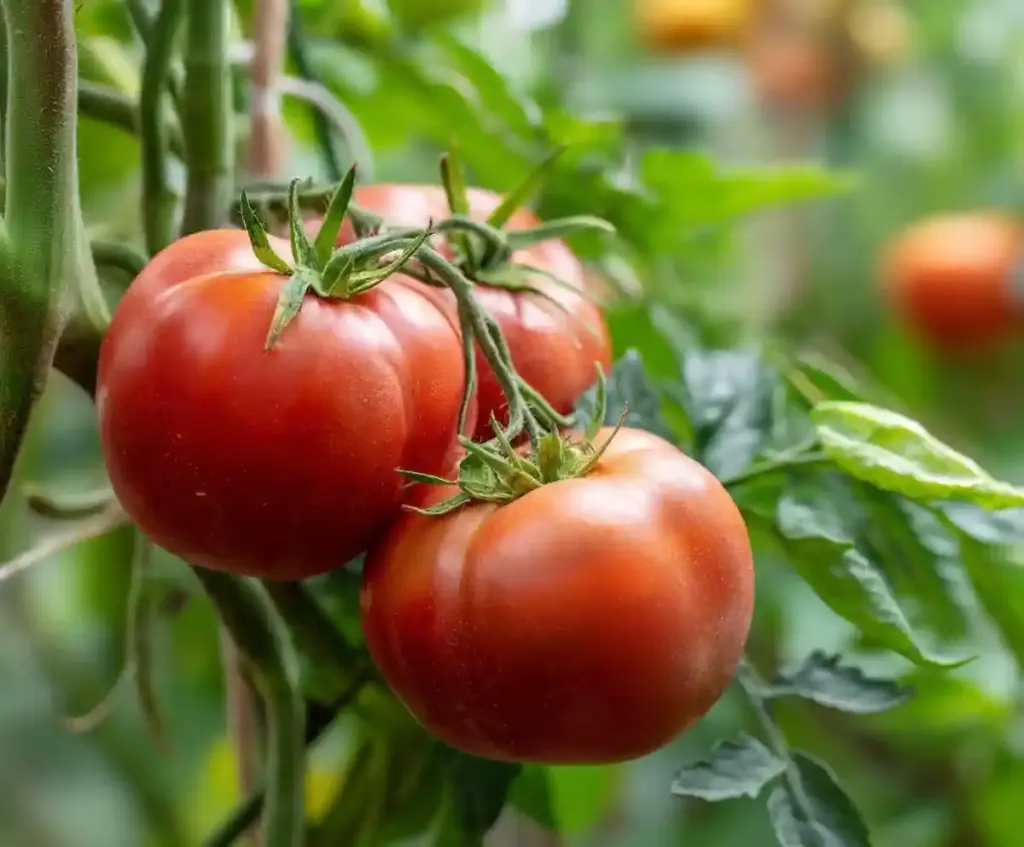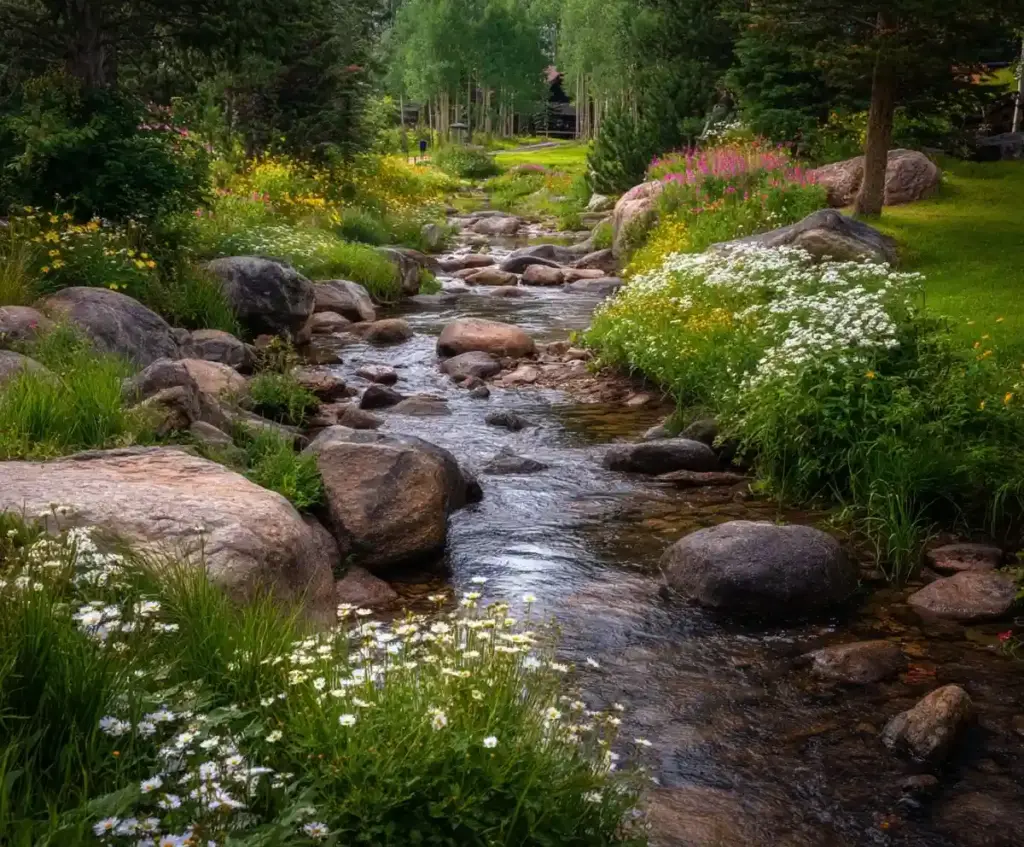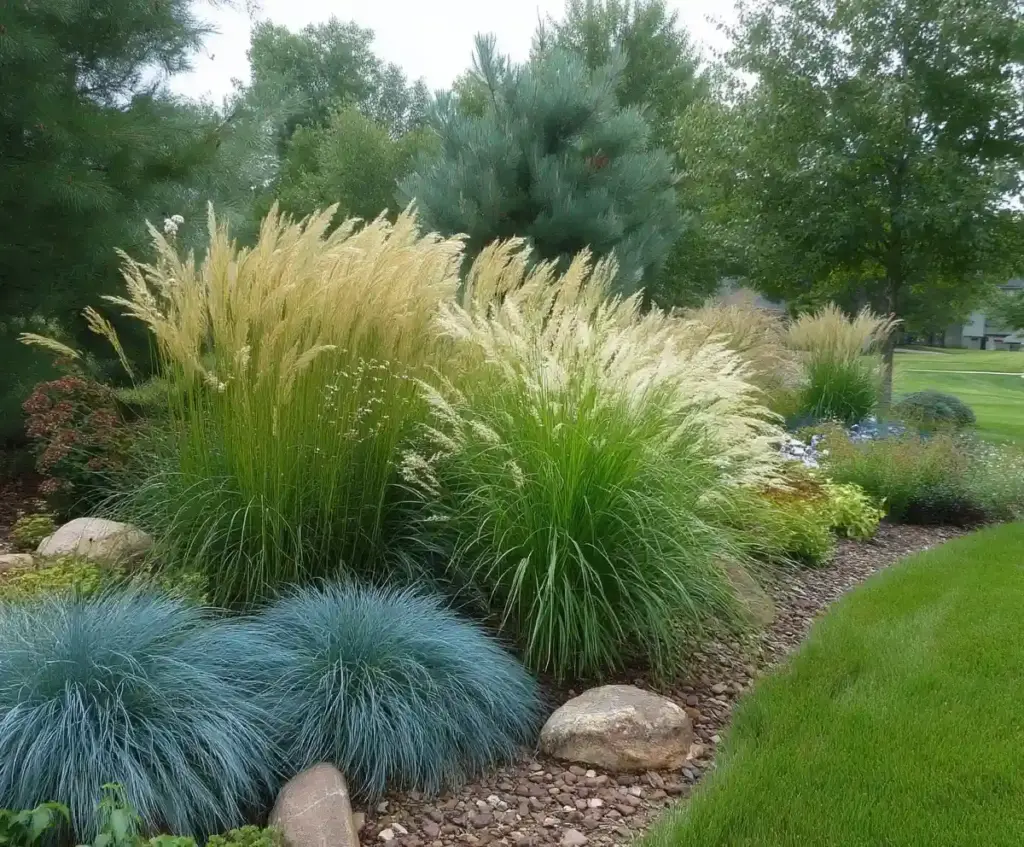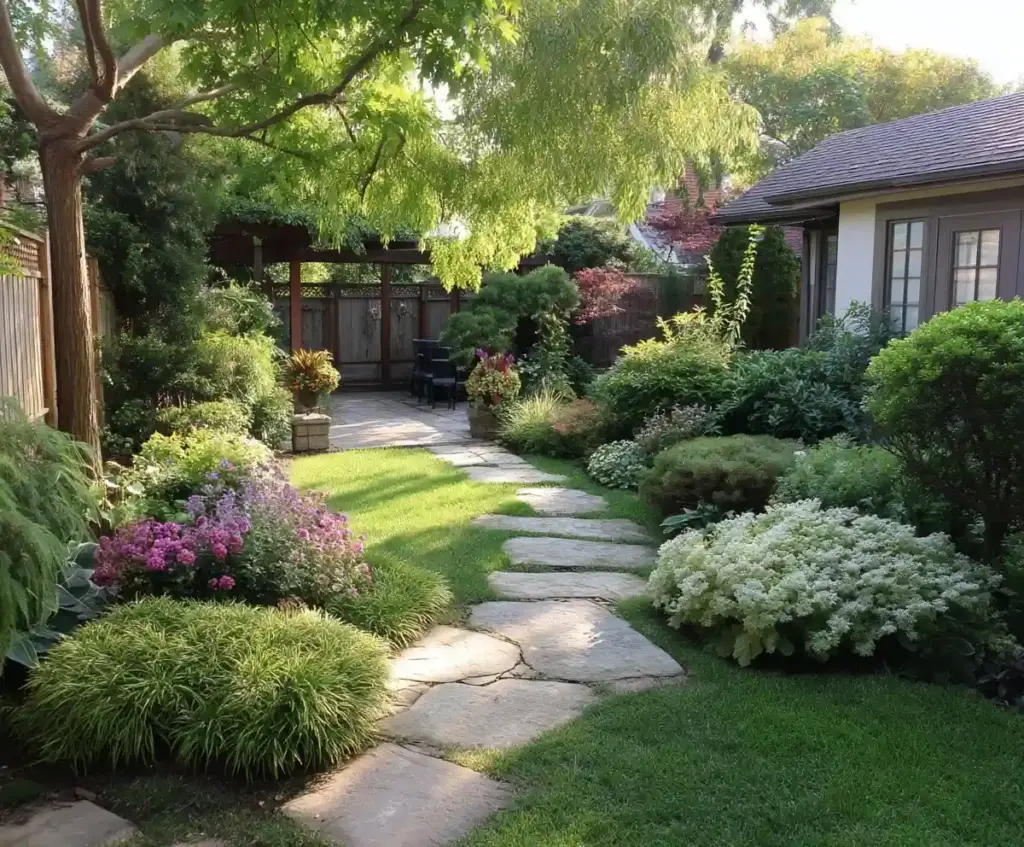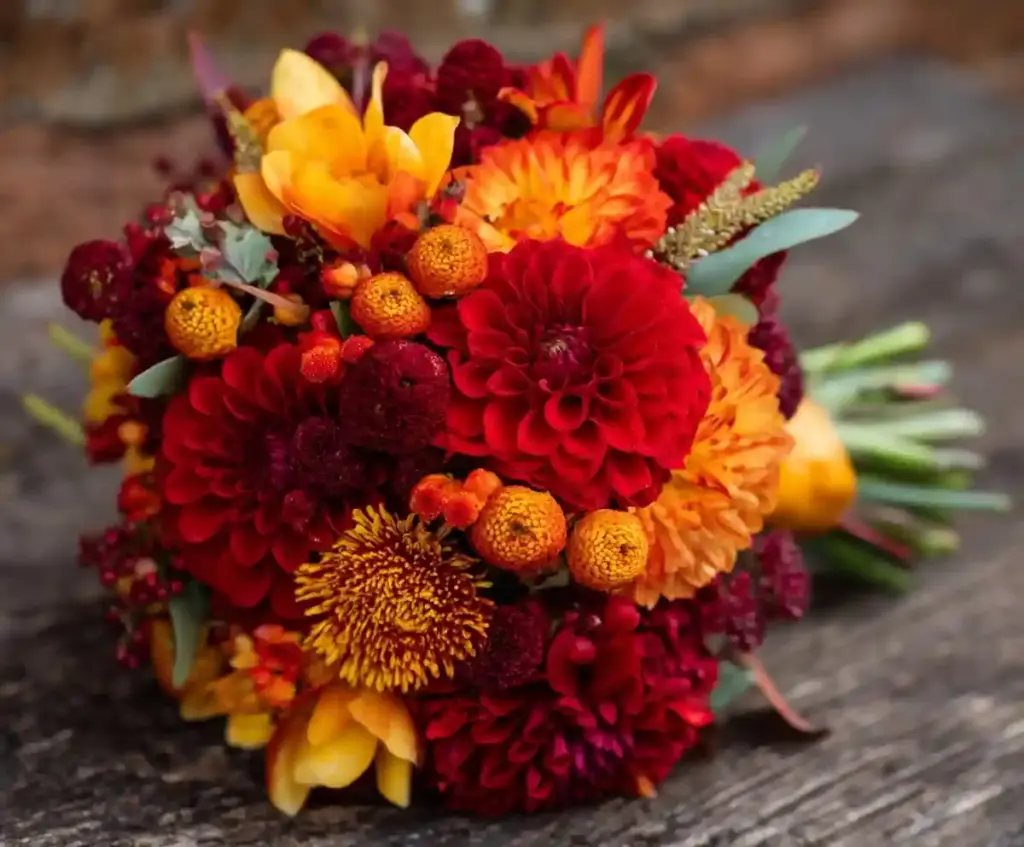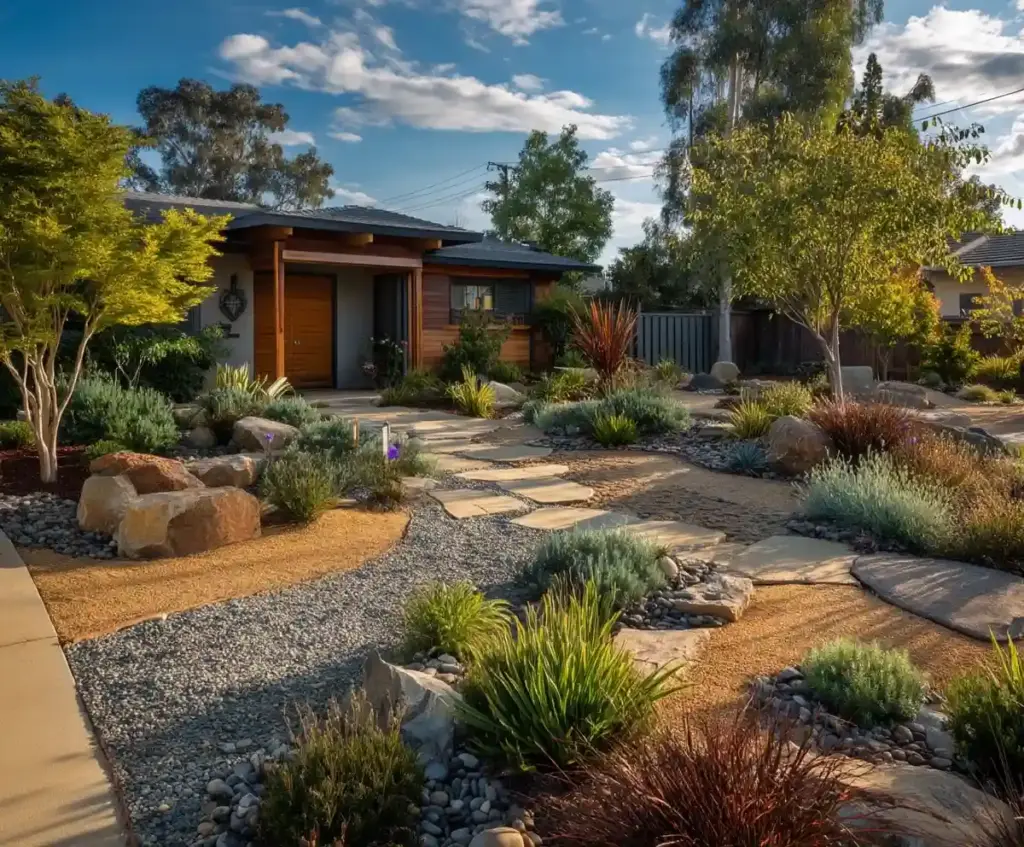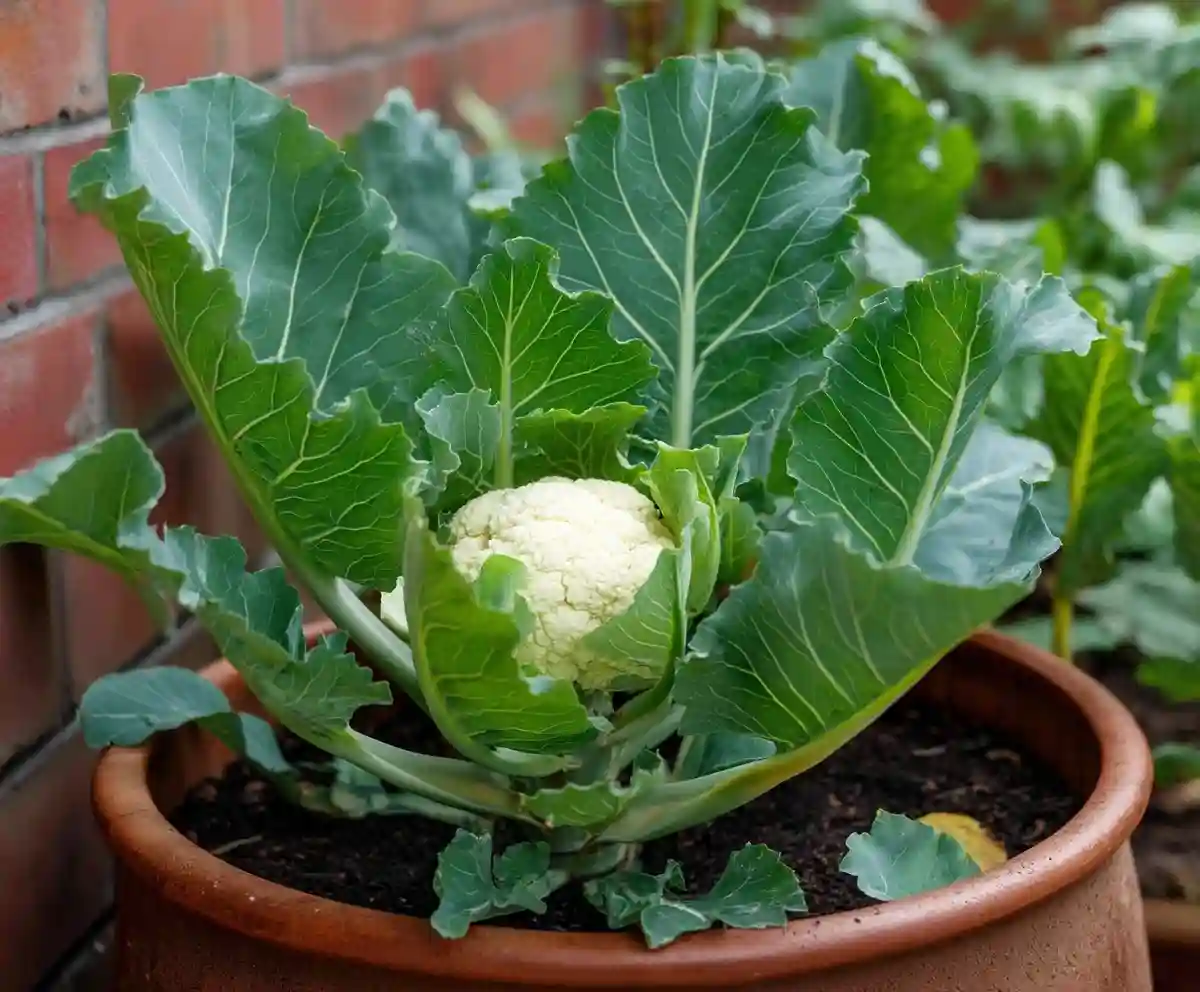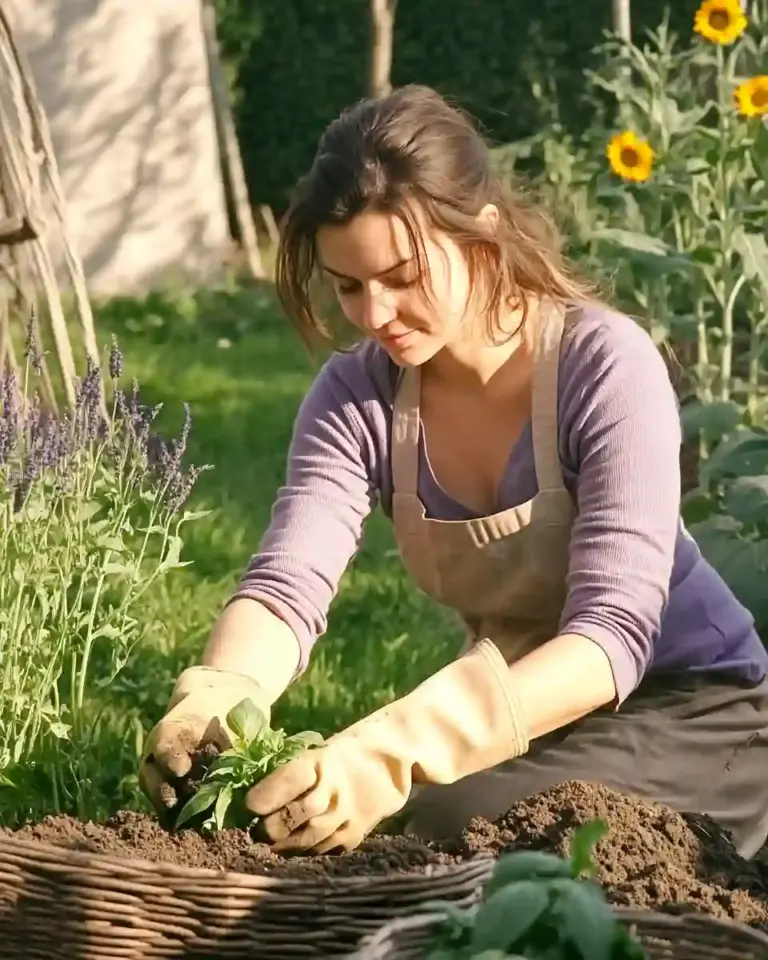Vegetables to grow in pots are a smart solution for gardeners with limited space, whether you’re working with a patio, balcony, or small backyard. Growing edible plants in containers doesn’t just save space—it gives you more control over soil quality, water access, and sunlight exposure. Whether you’re starting your first vegetable garden or looking to expand your harvest in a small area, container gardening offers flexibility and surprising yields.
With the right pot size, soil mix, and sunlight, you can successfully grow everything from tomatoes and lettuce to citrus trees and sweet potatoes—right on your porch or balcony. Below, we’ll walk through the best vegetables (and a few fruits and herbs) for container growing, with practical tips for each one to help you enjoy a thriving mini-garden in any space.
Table of Contents
1. Tomatoes
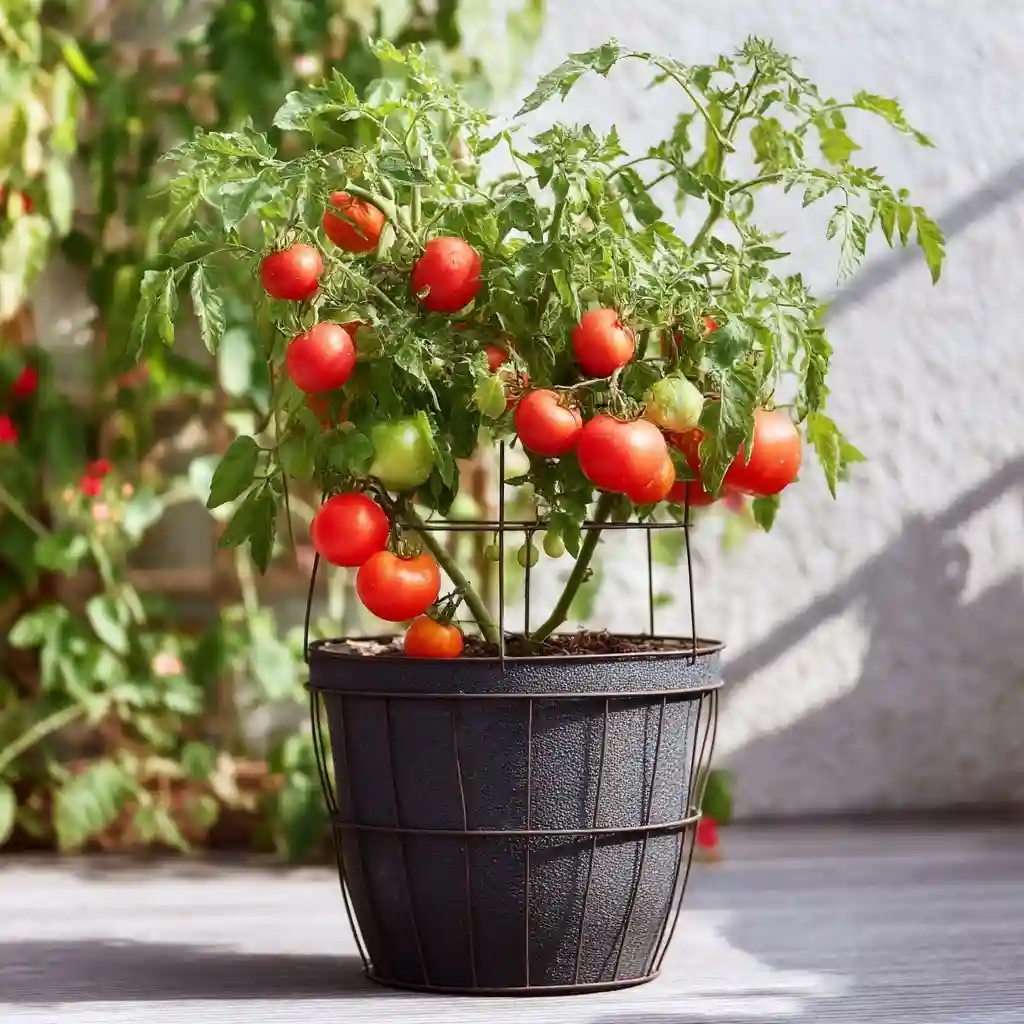
Tomatoes are among the most rewarding vegetables to grow in pots, producing high yields even in compact spaces. Choose a container that holds at least 10 gallons of soil and make sure it has good drainage. Tomatoes are thirsty plants, so consistent watering is key—self-watering containers or ollas (buried clay vessels) work especially well to prevent dry spells.
For best results, stick with determinate (bush-type) tomato varieties if you’re limited on space. Indeterminate types can also work, but they need larger pots and sturdy trellising. Place your pot in a location that receives 6–8 hours of sunlight daily, and add a tomato cage or support when planting to avoid damaging the roots later.
Tips:
- Use a high-quality potting mix made for containers.
- Fertilize every 2–3 weeks with a balanced or tomato-specific fertilizer.
- Rotate the pot if your sun exposure is uneven throughout the day.
2. Peppers
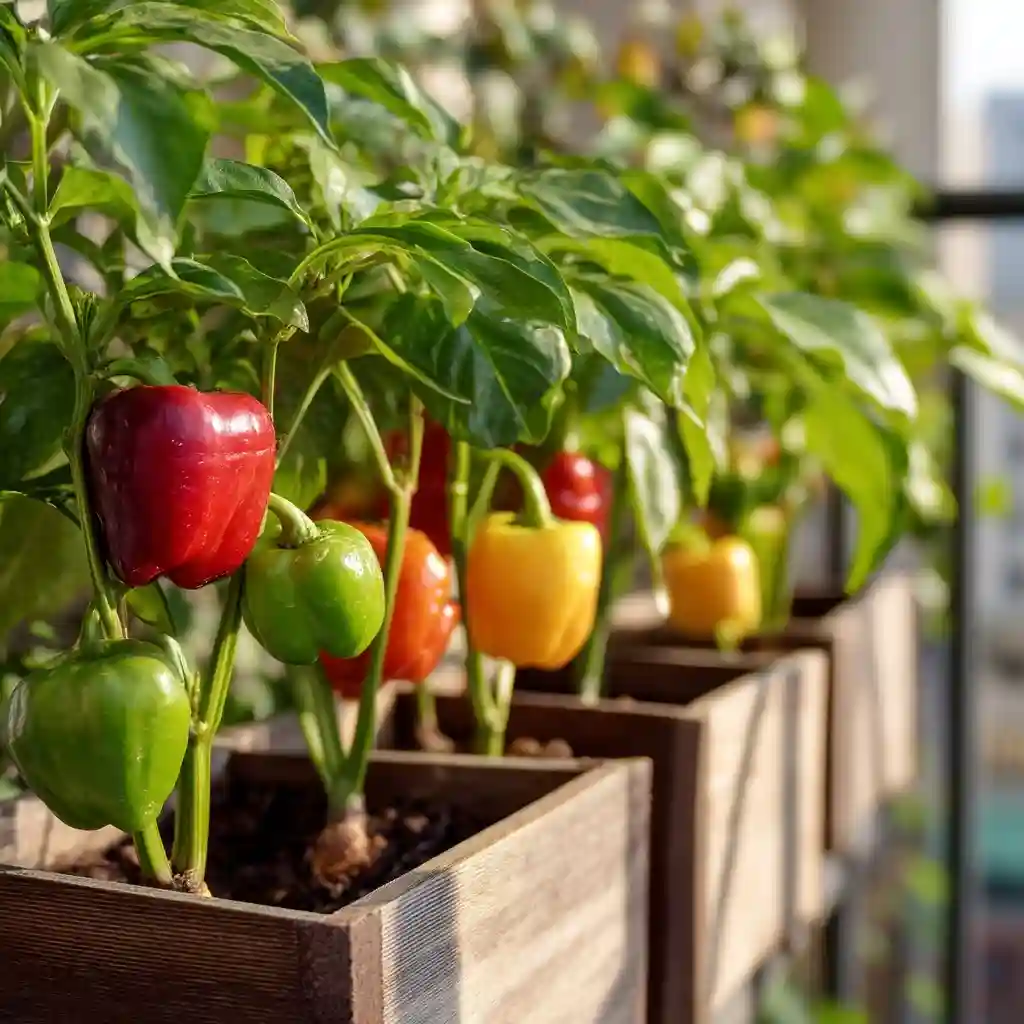
Whether you prefer sweet bell peppers or spicy chilies, peppers are excellent vegetables to grow in pots. They thrive in containers that are at least 5 gallons, with good drainage and rich, well-aerated soil. Peppers love warmth—containers warm up faster than garden beds, giving your plants a head start in spring.
Use compact or patio pepper varieties for smaller spaces, but even full-sized plants do well in medium-sized containers if supported properly. Insert stakes or small cages at planting time to help hold up the stems once fruit sets.
Tips:
- Place containers in a spot with 6–8 hours of full sun daily.
- Use an olla or regular deep watering to prevent drying out.
- Harvest peppers promptly to encourage continued fruiting.
3. Citrus Trees
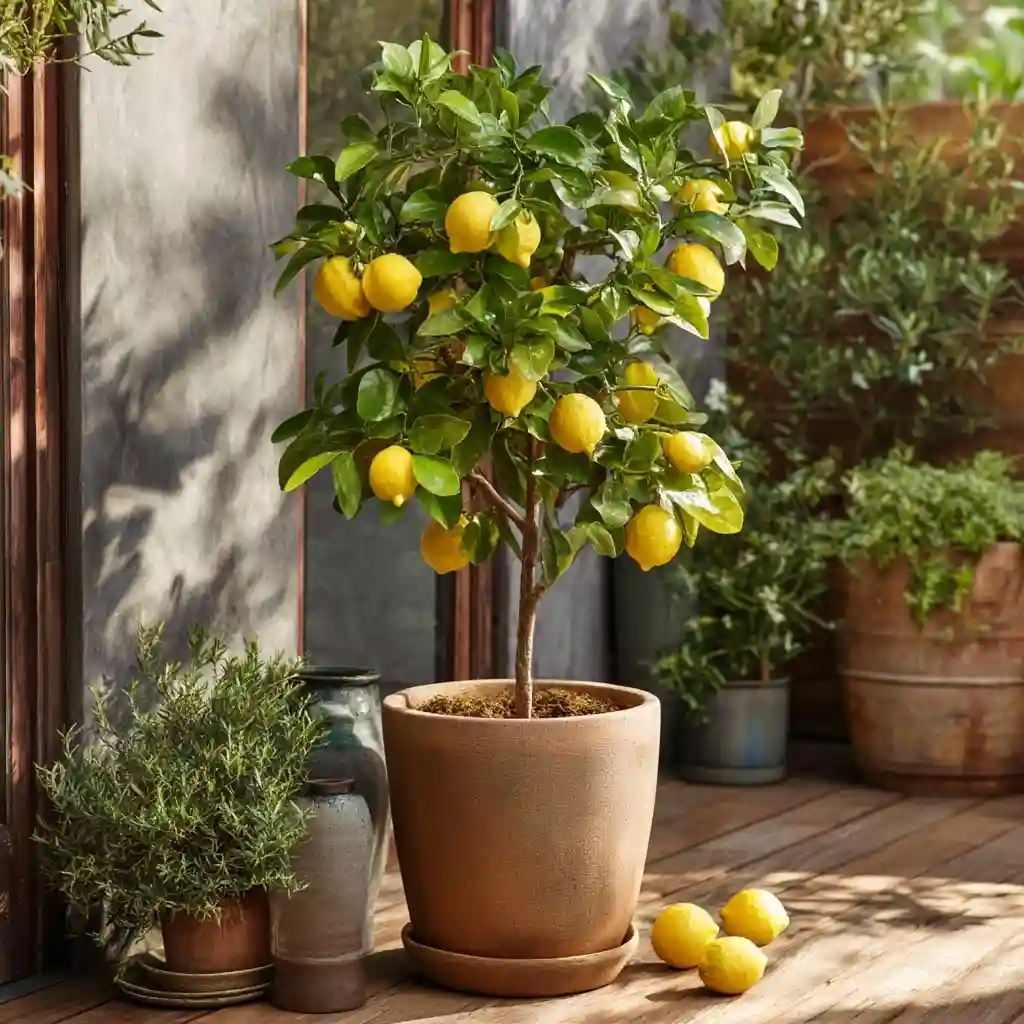
Compact and fragrant, citrus trees are surprisingly good vegetables to grow in pots—well, technically fruits, but they earn their spot in any container garden. From lemons and limes to mandarins, citrus trees adapt well to container life, especially when you choose dwarf or semi-dwarf varieties.
Use an extra-large pot (at least 20 gallons) to give roots room to spread. Citrus trees need plenty of sunlight—8 hours or more daily—and should be placed in a warm, sheltered spot. In cooler climates, bring them indoors before the first frost.
Tips:
- Use a well-draining potting mix and add citrus-specific fertilizer every 6 weeks.
- Water deeply but allow the top inch of soil to dry between waterings.
- Keep pots elevated on rolling caddies for easier movement.
4. Potatoes
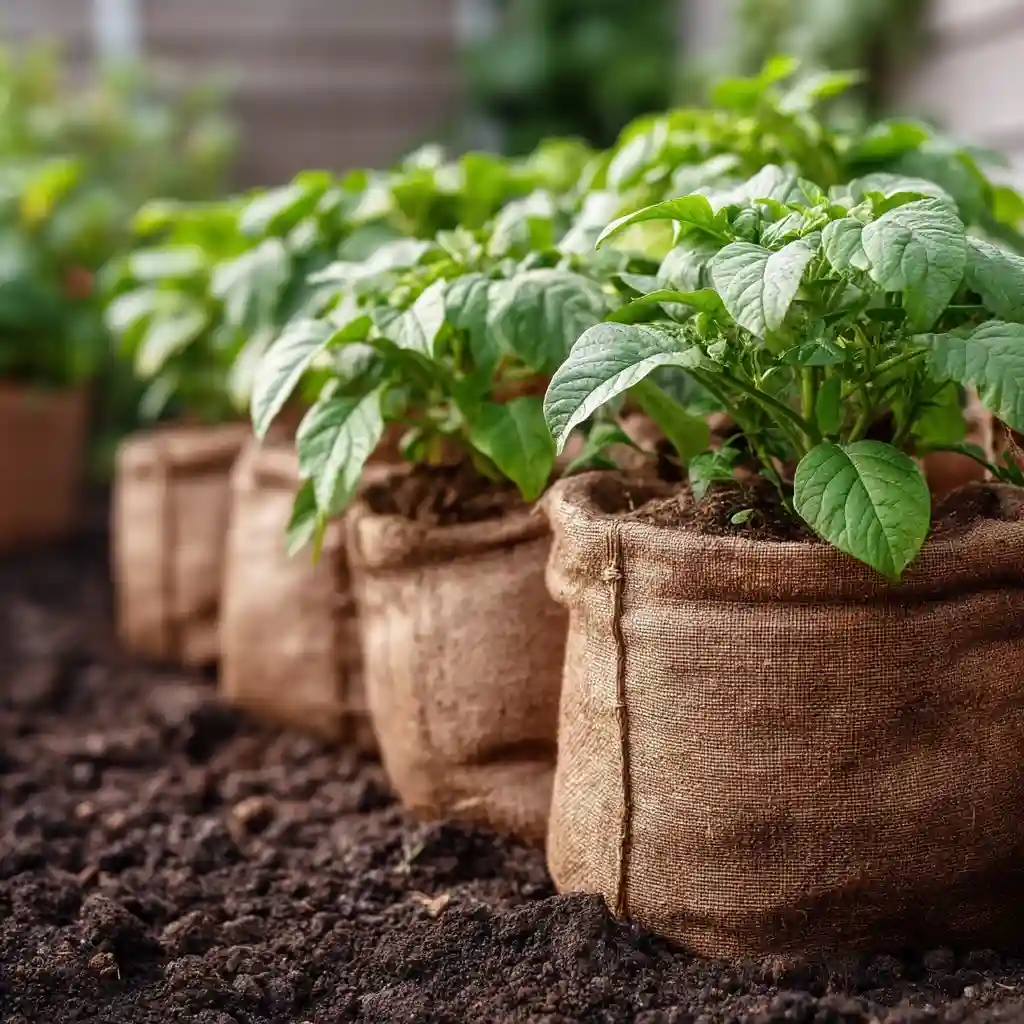
Among the most satisfying vegetables to grow in pots, potatoes are a container gardener’s favorite for their ease of harvest and surprising yields. All you need is a deep container—at least 5 gallons, but larger is better. Fabric grow bags or plastic storage tubs work great, as long as there are drainage holes.
Start by planting seed potatoes in 4–6 inches of soil, then “hill up” by adding more soil as the plants grow. This encourages more tuber production up the stem. When the foliage dies back, simply tip the container over and enjoy the harvest—no digging required.
Tips:
- Choose early-maturing or compact varieties for containers.
- Use slightly acidic potting soil and avoid overwatering.
- Place containers in full sun (6+ hours daily).
5. Summer Squash
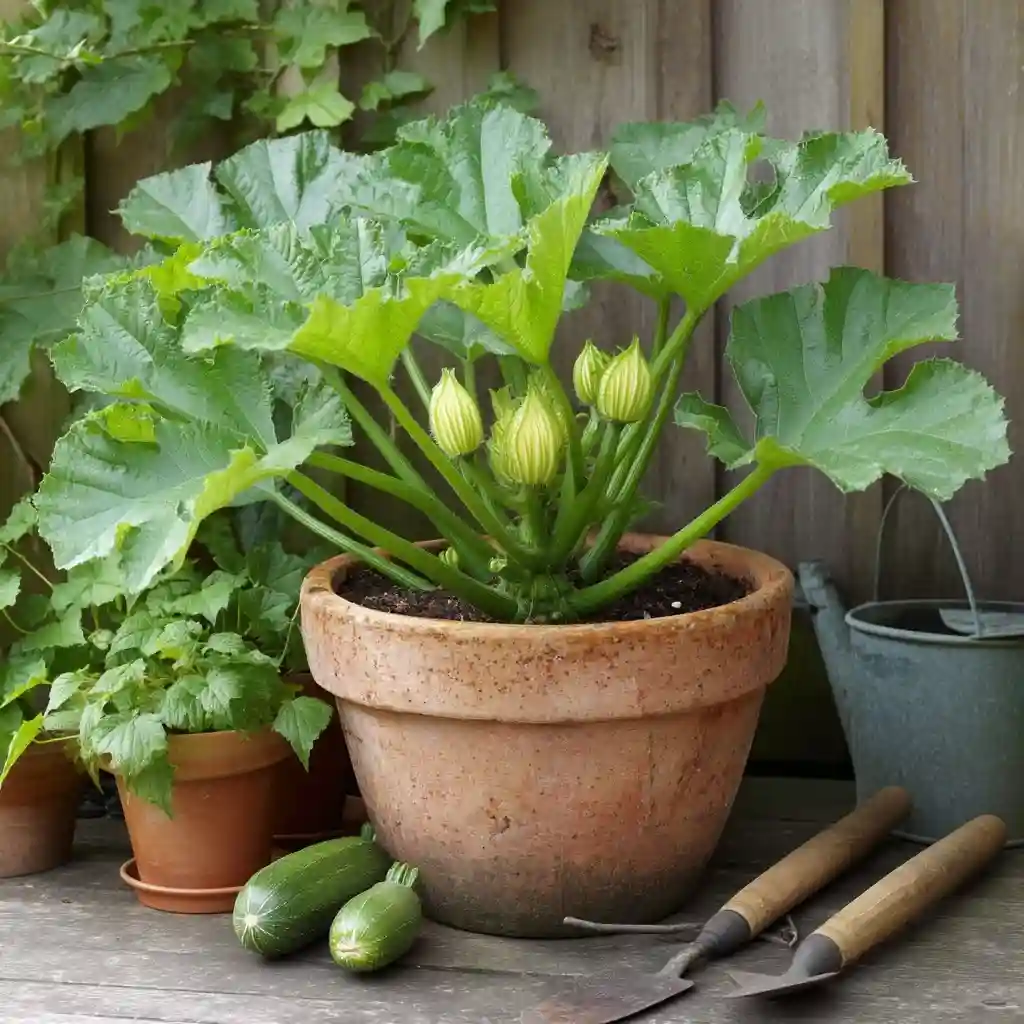
Summer squash—including zucchini and yellow squash—are vigorous vegetables to grow in pots when given enough space and sunlight. Choose a container that’s at least 5 gallons, with extra room around it for the plant to sprawl. While not as compact as other veggies, bush or dwarf varieties of squash are ideal for container gardens.
Squash plants have shallow roots, so consistent watering is important. Using an olla or a self-watering container helps prevent wilting during hot days. Adding a trellis or stake can help support stems and reduce the footprint of the plant.
Tips:
- Pick young squash regularly to encourage more fruiting.
- Use a rich, compost-heavy soil mix to feed heavy-feeding plants.
- Place containers where they’ll receive 6–8 hours of direct sunlight.
6. Lettuce

Fast-growing and compact, lettuce is one of the easiest vegetables to grow in pots—perfect for beginners and seasoned gardeners alike. You can grow multiple varieties in a single container, from crisp romaine to tender leaf lettuces. A shallow container (2 gallons or more) is enough since lettuce has a small root system.
Lettuce prefers cooler temperatures, so it’s ideal for early spring and fall plantings. Keep the soil moist but not soggy, and use partial shade in warmer climates to prevent bolting (premature flowering).
Tips:
- Use a potting mix with good moisture retention.
- Harvest outer leaves as needed to encourage continuous growth.
- For best results, water consistently using an olla or drip system.
7. Eggplants
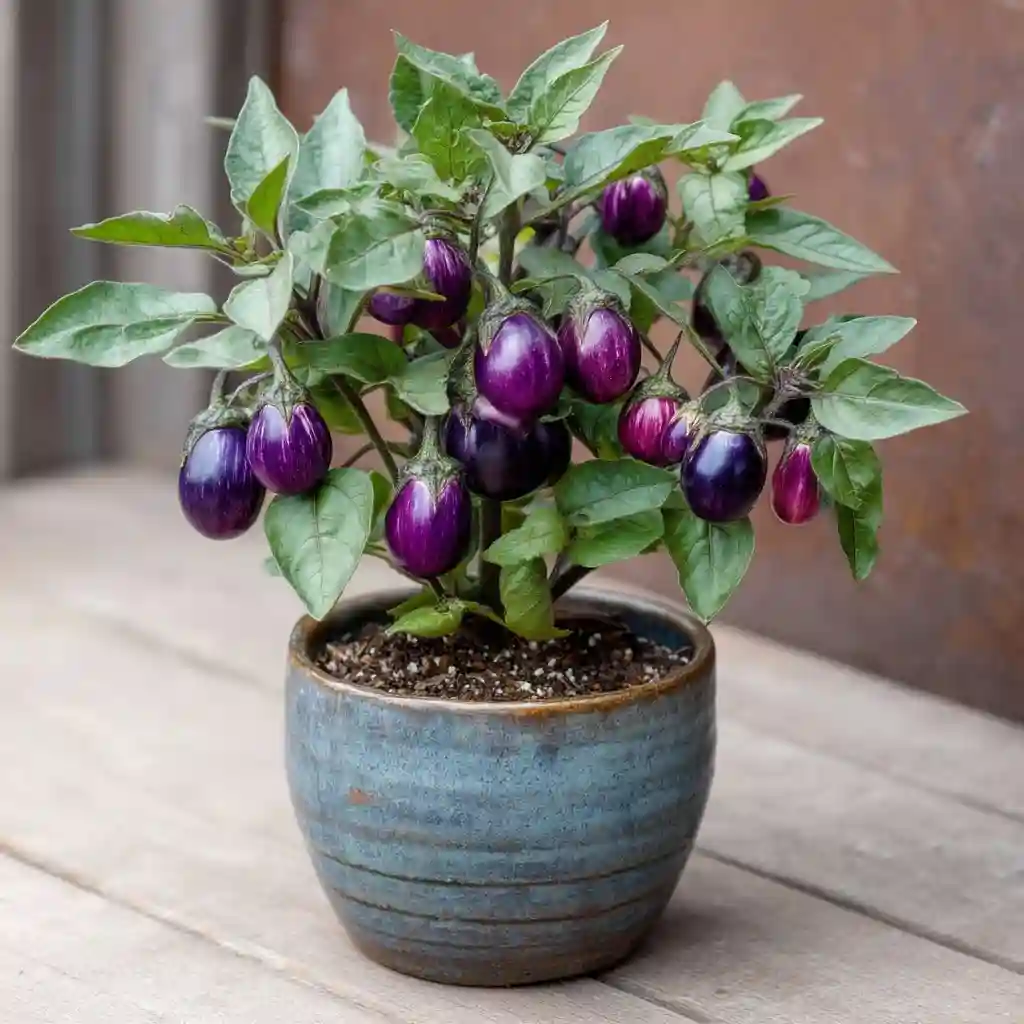
With their striking fruit and glossy leaves, eggplants are beautiful and productive vegetables to grow in pots. They prefer warm soil, making containers a great option for early planting. Choose a medium-sized pot (5 gallons or larger) and place it in a spot that gets at least 6–8 hours of sun each day.
Compact varieties like ‘Fairy Tale’ or ‘Bambino’ are ideal for container growing. Eggplants can become top-heavy as they mature, so install a small stake or cage at planting time to support the stems as fruit develops.
Tips:
- Use a heat-retaining container like black plastic to warm the soil.
- Fertilize every 2–3 weeks with a balanced organic fertilizer.
- Harvest when the skin is shiny and firm to avoid bitterness.
8. Peas
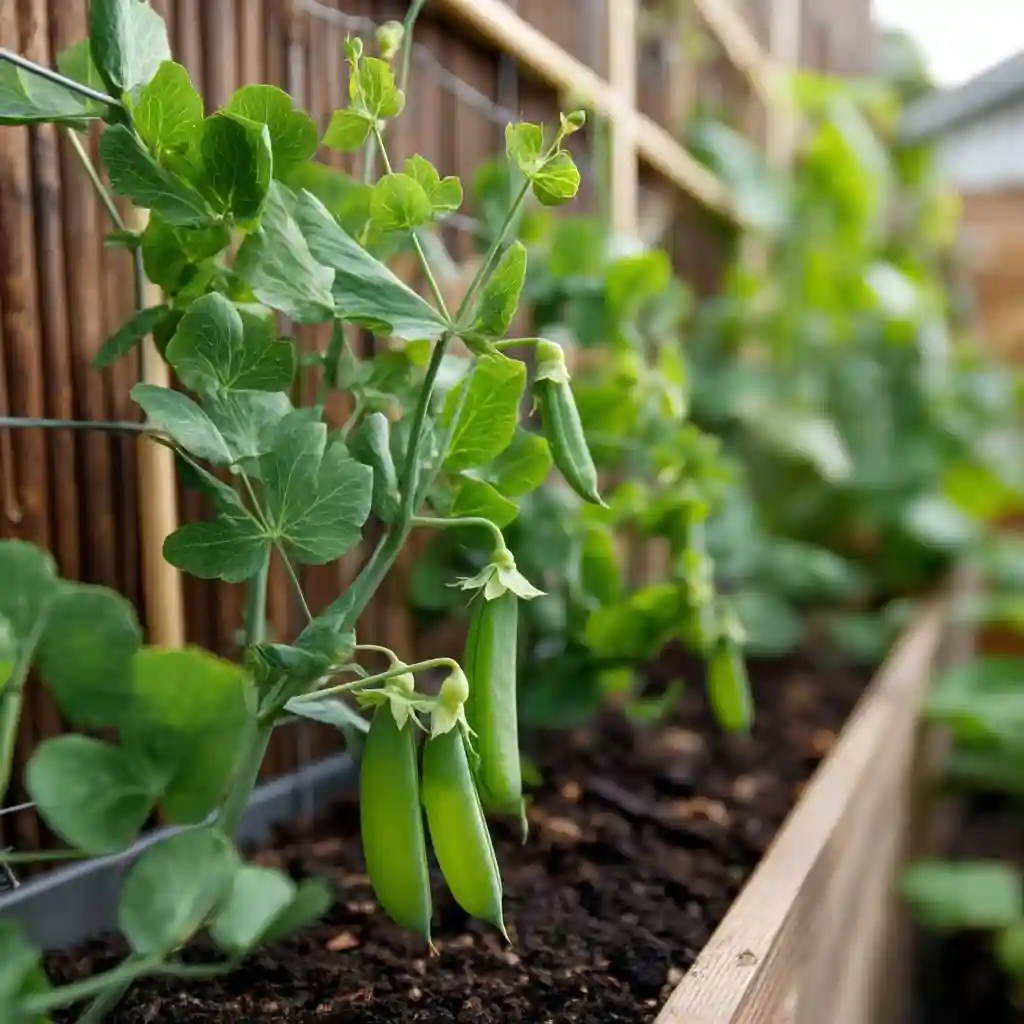
Sweet, crisp, and easy to grow, peas are ideal vegetables to grow in pots, especially in cooler seasons. Their shallow root systems make them well-suited for medium-sized containers (5 gallons or larger). Use a trellis, cage, or bamboo stakes for support—install them at planting time to avoid disturbing the roots later.
Choose dwarf or bush varieties like ‘Tom Thumb’, ‘Sugar Ann’, or ‘Little Marvel’ for container growing. Sow seeds directly into the soil, spacing them a few inches apart. Keep the soil evenly moist and place containers in full sun for best yields.
Tips:
- Don’t wait too long to harvest; pick pods when young and tender.
- Use a loamy, well-draining potting mix.
- Mulch the top of the container to retain moisture.
9. Sweet Potatoes
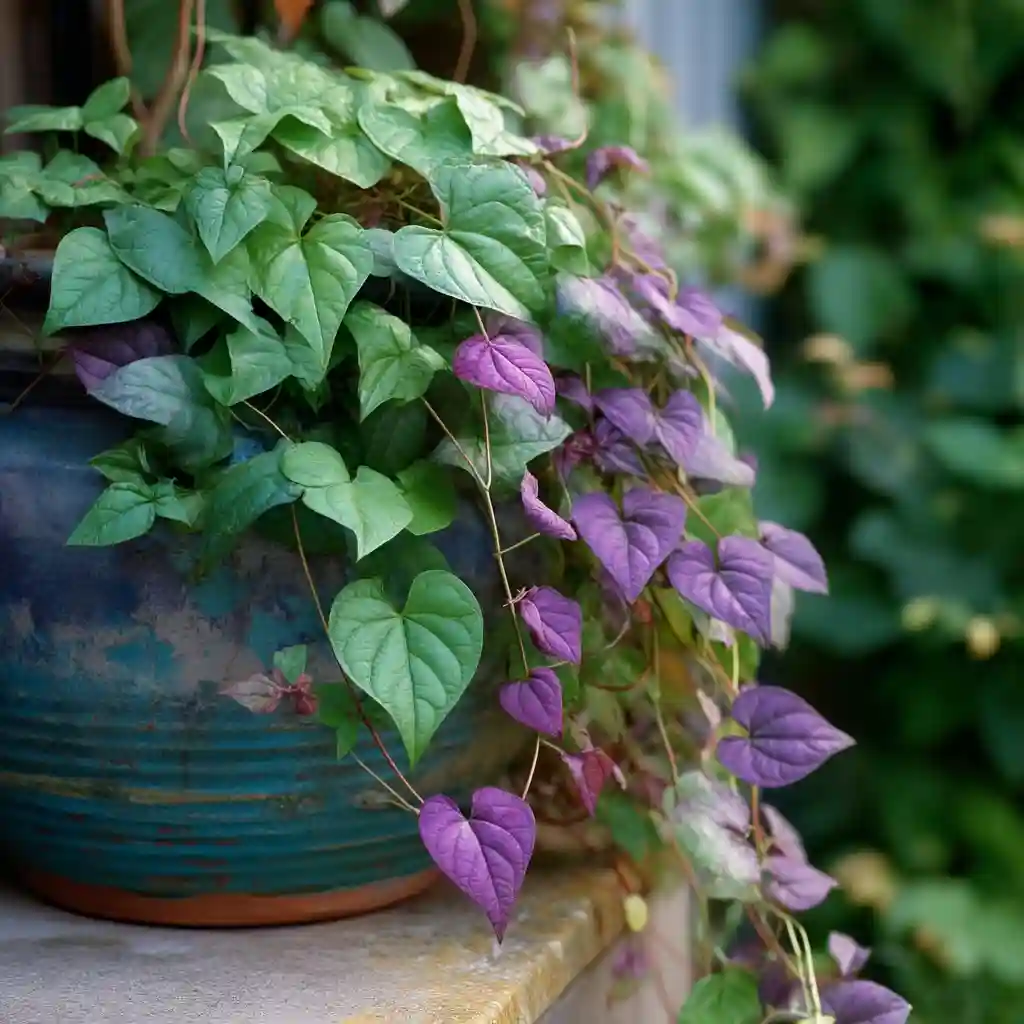
With their lush vines and nutrient-packed tubers, sweet potatoes are rewarding vegetables to grow in pots. They need space to spread below and above the soil, so choose a large container (at least 10 gallons) that is wide and deep. Fabric grow bags work especially well, offering good drainage and airflow.
Sweet potatoes love warmth and need plenty of sunshine—at least 6–8 hours daily. Plant slips (not seeds) in slightly acidic, loose soil, and keep them evenly watered throughout the growing season. Once the foliage begins to yellow in late summer or early fall, they’re ready for harvest.
Tips:
- Allow vines to trail or climb for efficient use of space.
- Use a fertilizer low in nitrogen to promote root growth.
- Let harvested sweet potatoes cure for 1–2 weeks to enhance flavor and storage.
10. Carrots

Crunchy and sweet, carrots are perfect vegetables to grow in pots, especially when you want straight, uniform roots. The key is depth—use a container that’s at least 12 inches deep and holds a minimum of 3 gallons of soil. Loose, sandy potting mix is essential to prevent misshapen roots.
Sow seeds directly into the container and thin seedlings to allow 2–3 inches of space between each plant. Carrots prefer cooler temperatures and grow best in early spring or fall. Keep soil evenly moist throughout the growing cycle.
Tips:
- Choose short or round varieties like ‘Parisian’ or ‘Thumbelina’ for shallower containers.
- Avoid fertilizers high in nitrogen, which can cause forked roots.
- Harvest when roots reach desired size; don’t wait too long or they may turn woody.
11. Cabbage
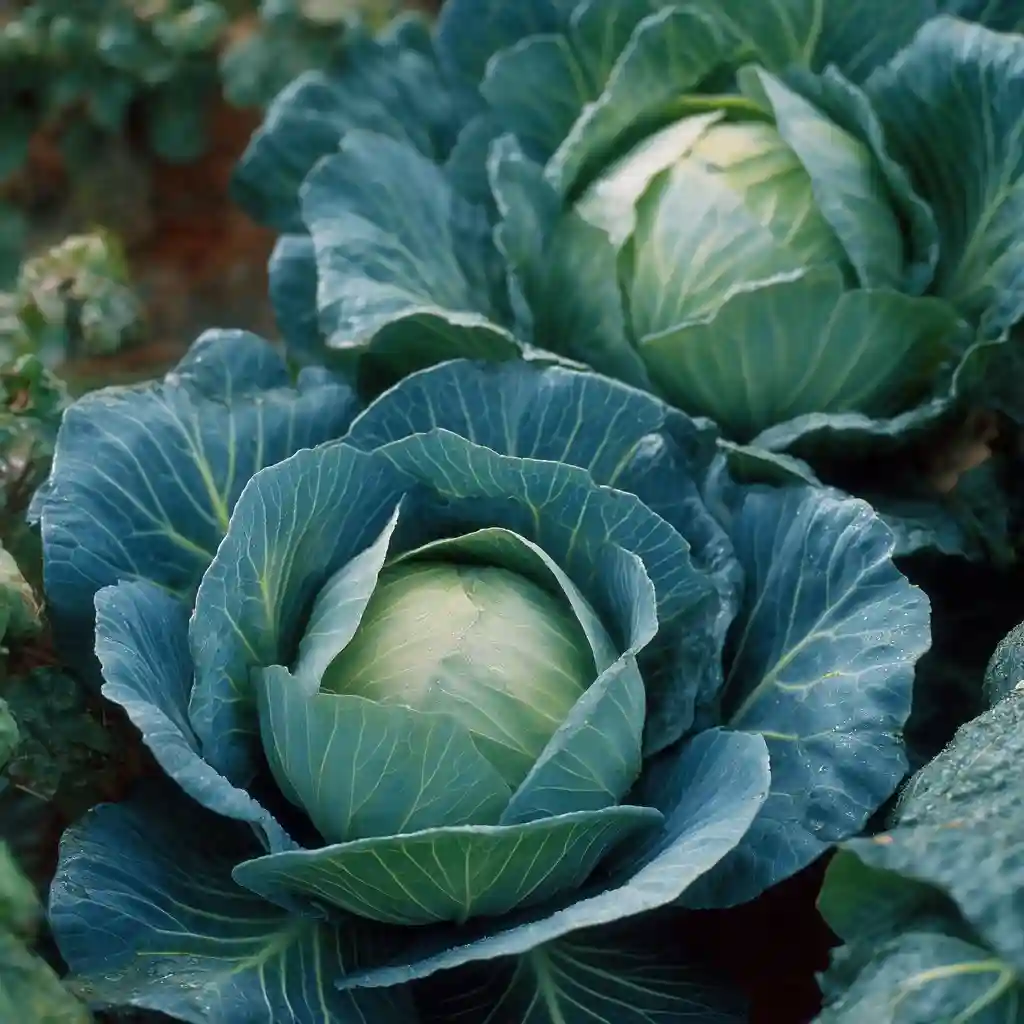
Dense and heavy-headed, cabbage may seem like a garden-only crop, but it’s a great vegetable to grow in pots—especially smaller varieties. Use a deep container (at least 12 inches) that holds 5 gallons or more. Compact cultivars like ‘Golden Acre’ or ‘Tiara’ are ideal for container gardening.
Cabbage is a cool-season crop, best grown in spring or fall. It prefers full sun but tolerates partial shade in warmer climates. Give each plant plenty of space to form a full head, and keep the soil consistently moist for best results.
Tips:
- Use a rich potting mix high in organic matter.
- Protect from cabbage worms and aphids with row covers or neem oil.
- Harvest once the head feels firm when squeezed gently.
12. Onions
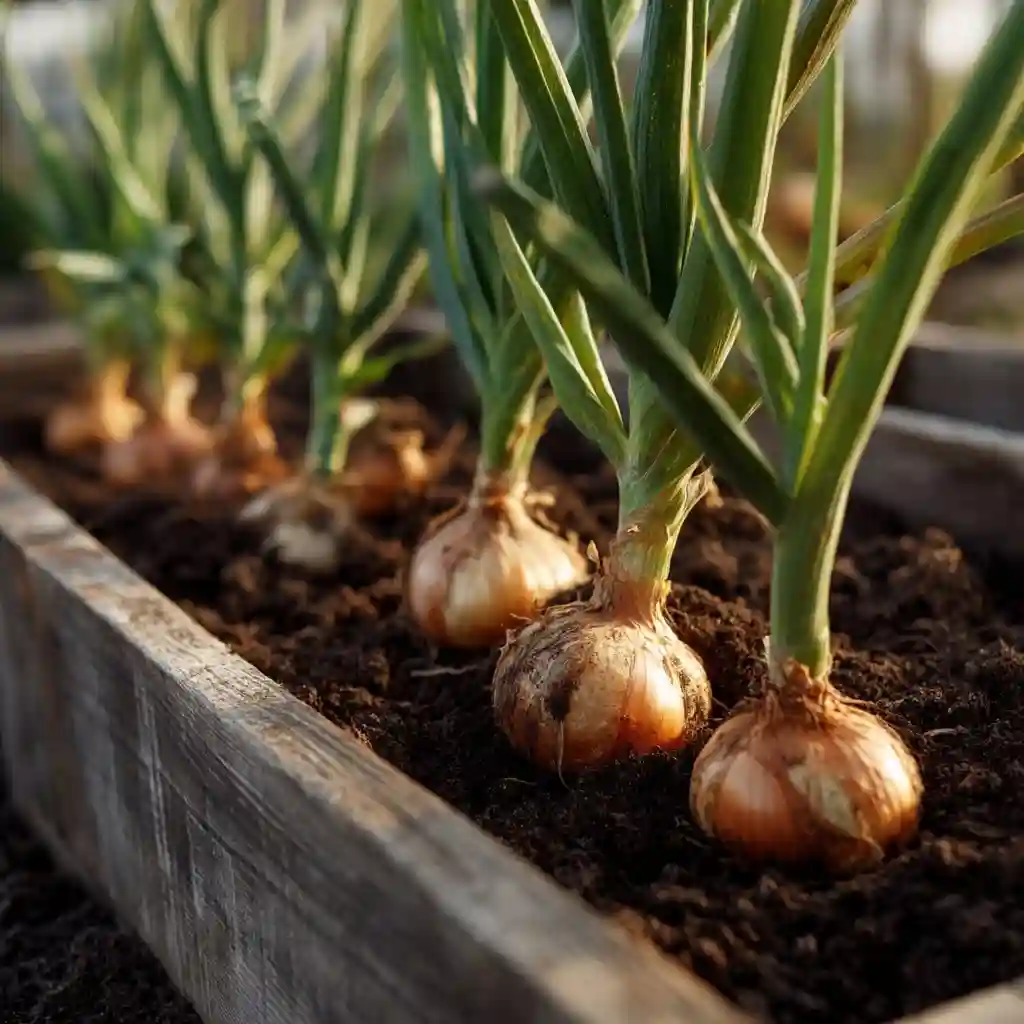
Versatile and low-maintenance, onions are smart vegetables to grow in pots, whether you’re after green onions or full-sized bulbs. The container size depends on the type: use at least 6 inches deep for scallions and 12 inches deep for bulbing onions. A wide container lets you grow multiple plants at once with good spacing.
Onions are light feeders but require consistent moisture and full sun (6+ hours daily) to bulb properly. They also make great companion plants, helping deter pests when interplanted with other veggies in shared containers.
Tips:
- Use loose, well-drained soil high in organic matter.
- Thin seedlings or transplants to about 4 inches apart for bulb development.
- Harvest green onions early; wait until tops fall over for bulbing varieties.
13. Garlic
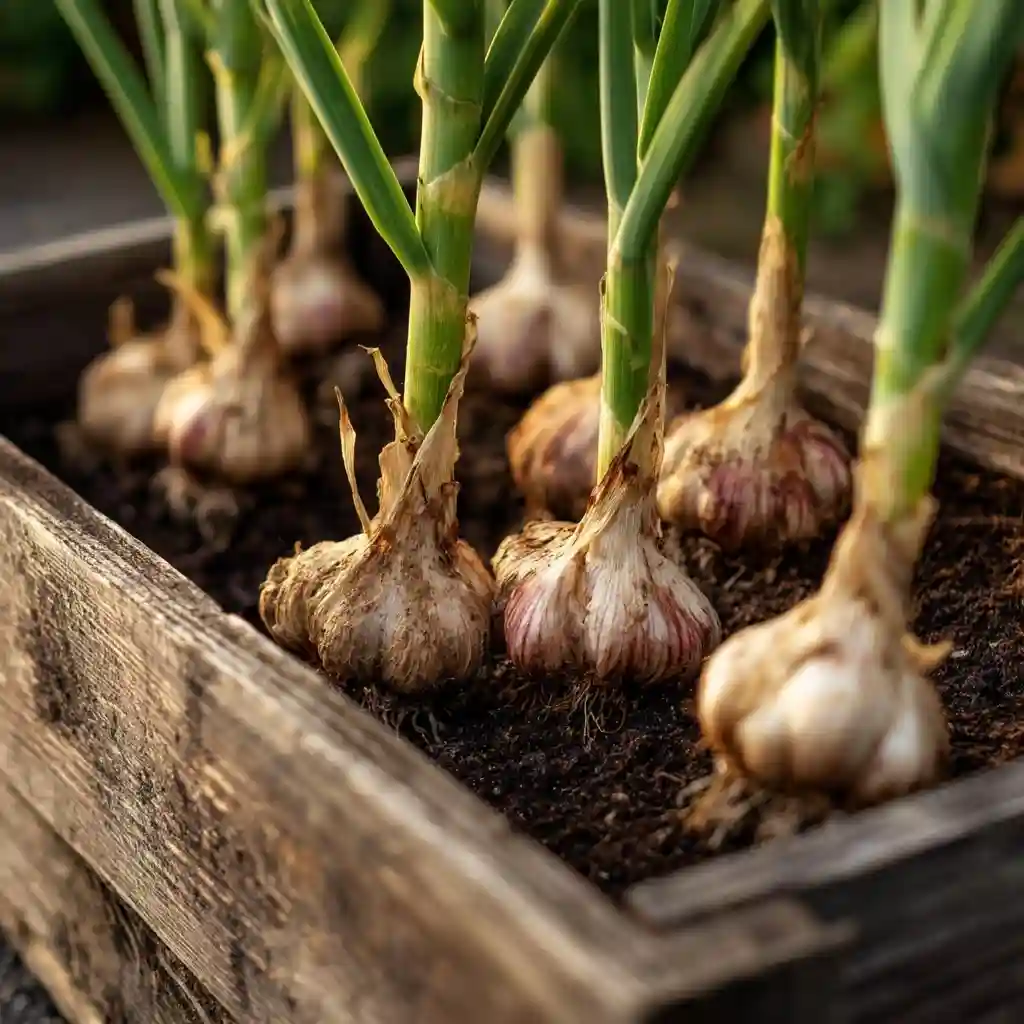
Easy to grow and incredibly rewarding, garlic is one of the most space-efficient vegetables to grow in pots. It doesn’t need much room—containers just 6–8 inches deep and 2 gallons or larger work well. Use a wide container to plant multiple cloves, spacing them about 4 inches apart.
Garlic is typically planted in the fall and harvested the following summer. Use loose, well-draining soil, and position containers in full sun. As it grows, garlic requires minimal care, just steady watering and protection from soggy conditions.
Tips:
- Plant individual cloves pointy side up, 2 inches deep.
- Avoid high-nitrogen fertilizers that encourage leaf growth over bulbs.
- Allow harvested garlic to cure in a dry, shaded area for 2–3 weeks before storing.
14. Okra
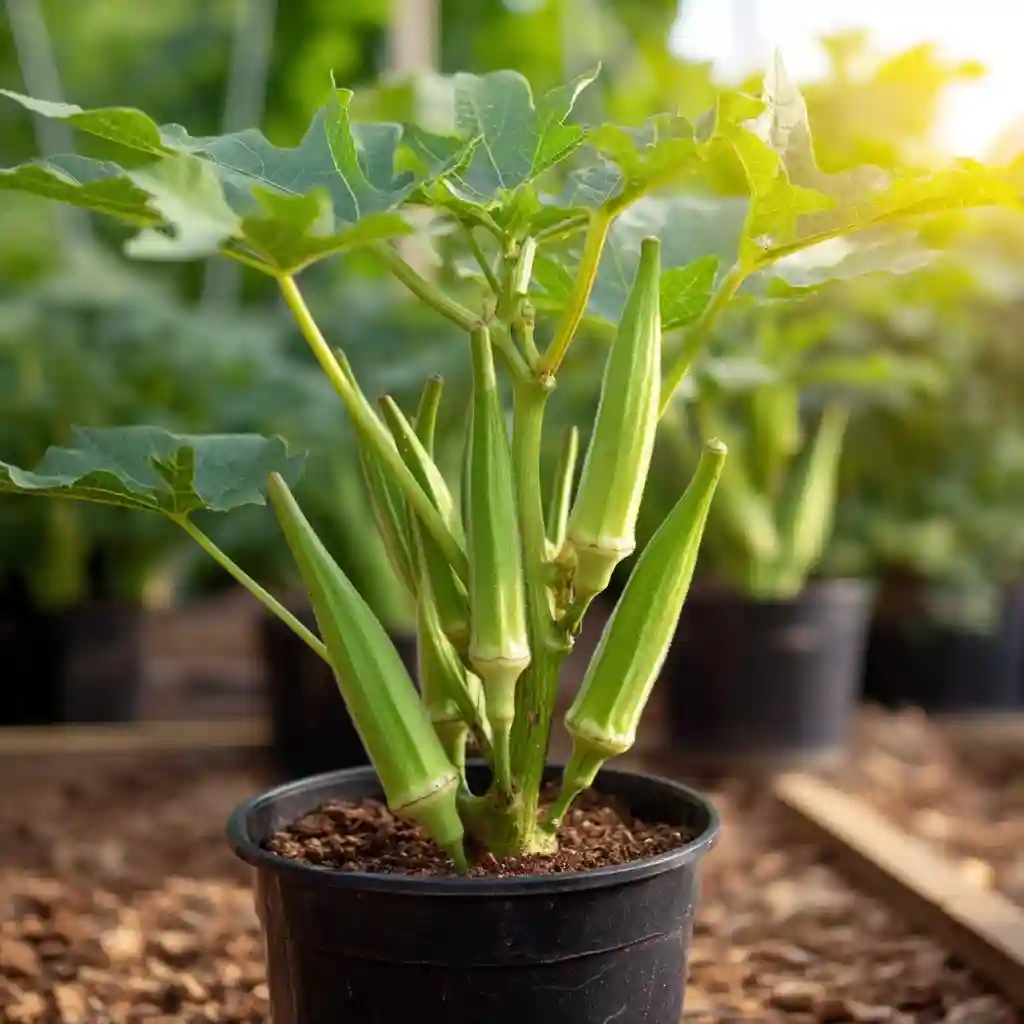
Heat-loving and tough, okra is a surprisingly good vegetable to grow in pots, especially in warm climates where it thrives all summer long. Use a medium to large container (at least 5 gallons) and give the plant a sunny location—at least 6–8 hours of direct sunlight daily.
Compact okra varieties like ‘Baby Bubba’ or ‘Clemson Spineless’ are well-suited for containers. While okra is drought-tolerant once established, it grows best with consistent moisture and warm soil. You can also interplant with fast-growing crops like radishes or beans early on.
Tips:
- Harvest pods when they’re 2–4 inches long for tender texture.
- Stake tall varieties to prevent tipping in windy conditions.
- Wear gloves when harvesting if you’re sensitive to okra’s fuzzy skin.
15. Swiss Chard
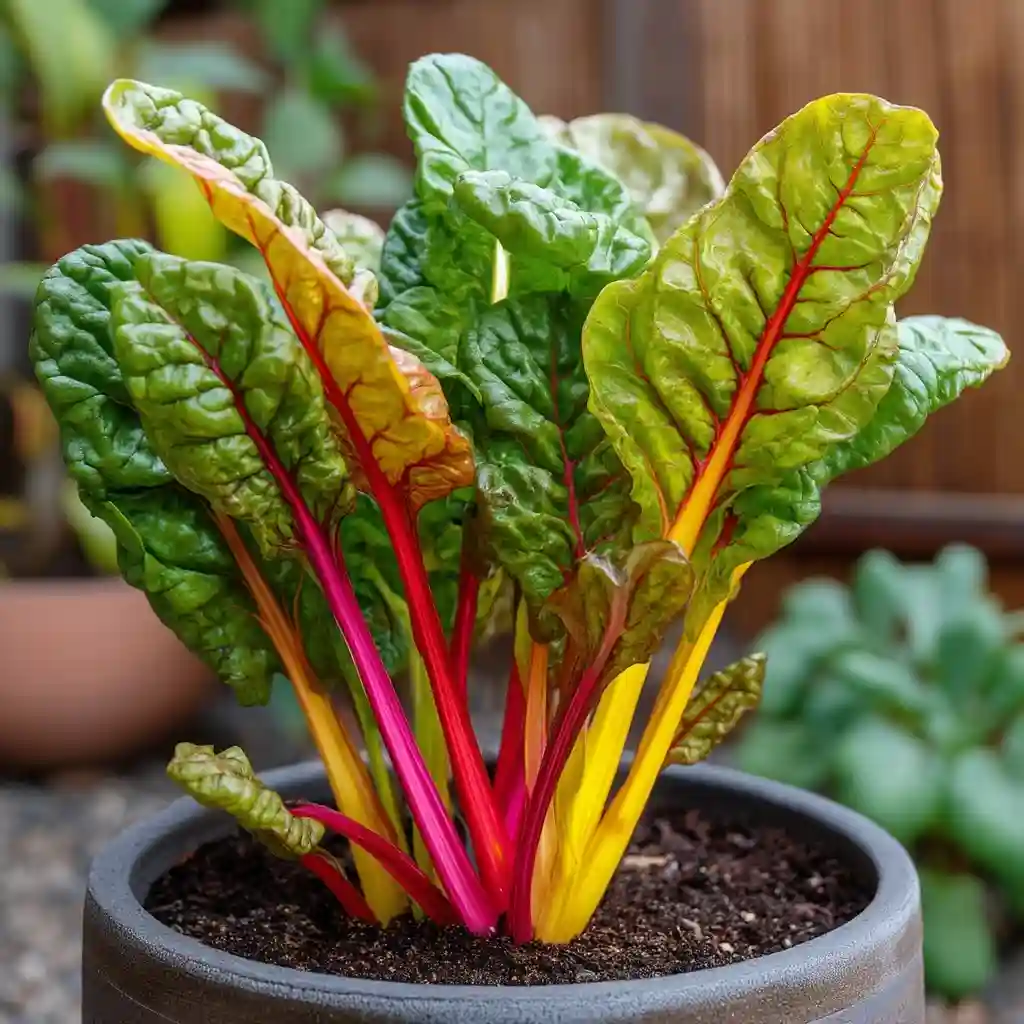
Colorful, nutritious, and easy to grow, Swiss chard is one of the most underrated vegetables to grow in pots. It’s highly adaptable and does well in small to medium containers (2 gallons or larger). With vibrant stems and lush leaves, it also adds ornamental value to your patio garden.
Chard is cold- and heat-tolerant, making it a great year-round option in many regions. It prefers full sun but tolerates partial shade, especially in hotter climates. You can harvest individual leaves as needed, and the plant will continue producing for months.
Tips:
- Grow from seed or transplants; both establish quickly in pots.
- Use a nutrient-rich potting mix, and fertilize monthly.
- Keep soil consistently moist to prevent bitterness in the leaves.
16. Kale
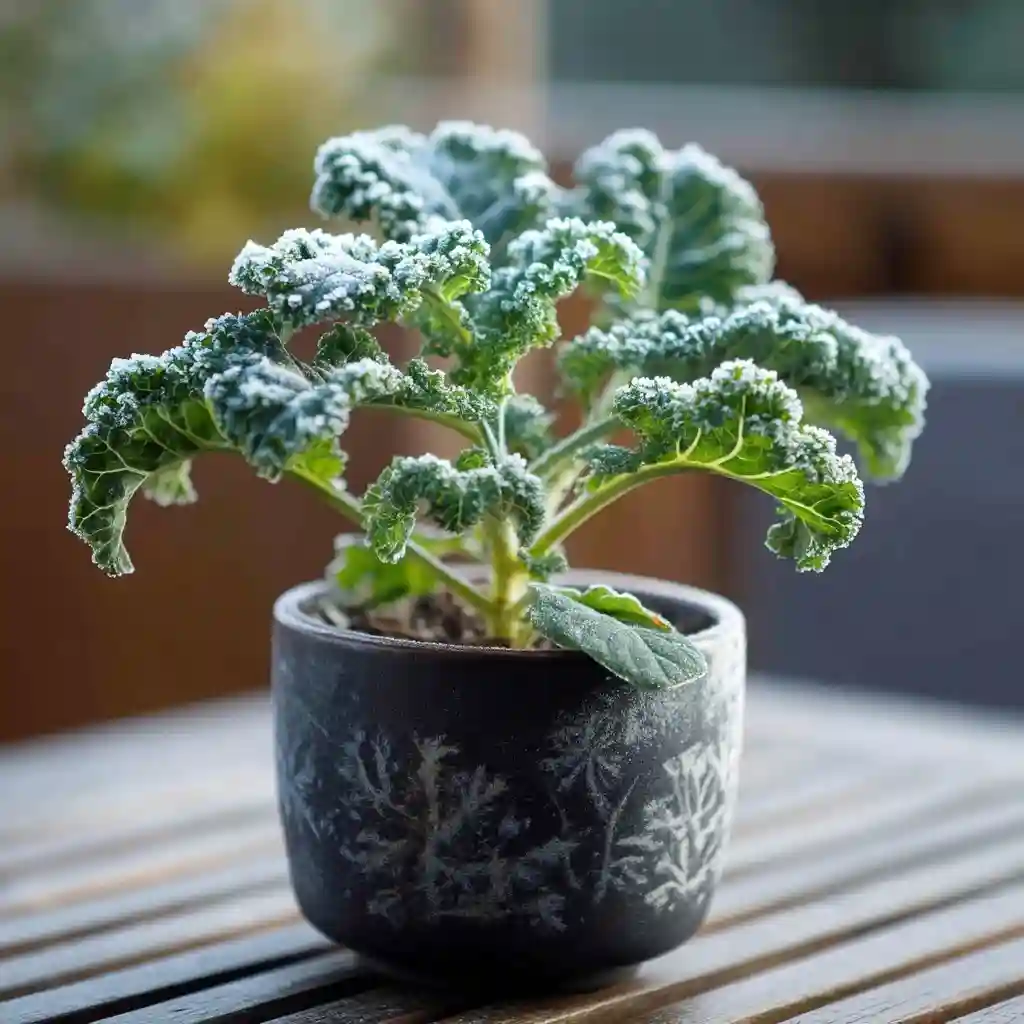
A nutrient powerhouse, kale is a cool-season favorite and one of the easiest vegetables to grow in pots. It grows well in small to medium containers (2 gallons or larger) and doesn’t require much fuss. Even a single kale plant can produce for months with regular harvesting.
Kale thrives in cooler temperatures and can tolerate light frost, which actually improves its flavor. Place your pot in full sun to partial shade, depending on your climate. Keep the soil moist and feed monthly with a balanced organic fertilizer to encourage leafy growth.
Tips:
- Harvest outer leaves regularly, leaving the center to continue growing.
- Choose compact varieties like ‘Dwarf Blue Curled’ for smaller containers.
- Watch for aphids and treat early with insecticidal soap or neem oil.
17. Cauliflower
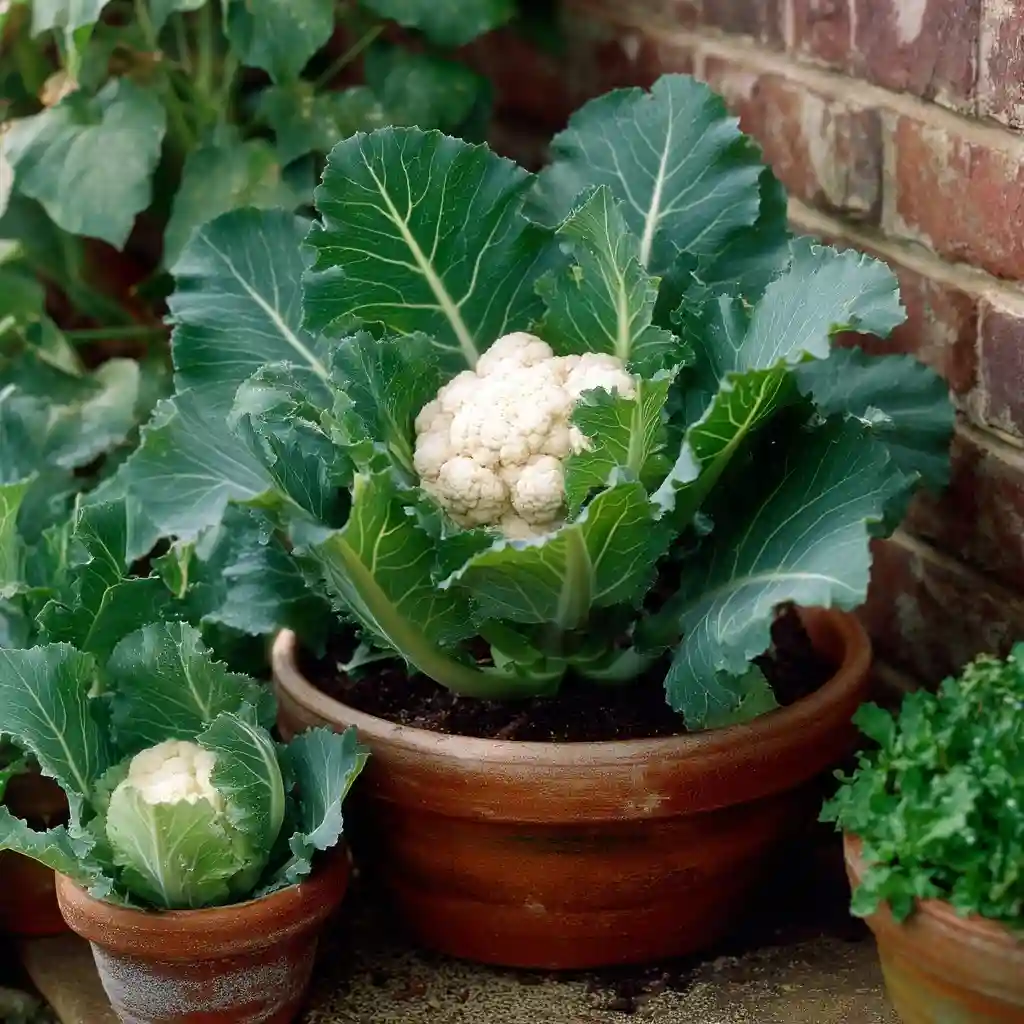
A bit more temperamental than other crops, cauliflower is still a worthwhile vegetable to grow in pots if you can provide the right conditions. It needs a deep container (at least 12 inches and 5 gallons or more) and consistent moisture and temperature control to develop a full head.
Cauliflower prefers cool weather—making it best for spring and fall plantings—and should be kept in full sun for optimal growth. Since it only produces one head per plant, harvest timing is important: pick it when the head is firm, compact, and fully developed.
Tips:
- Choose quick-maturing or smaller varieties for container growing.
- Mulch the soil to regulate temperature and retain moisture.
- Tie outer leaves over the head to blanch (protect) it from sunlight if needed.
18. Strawberries
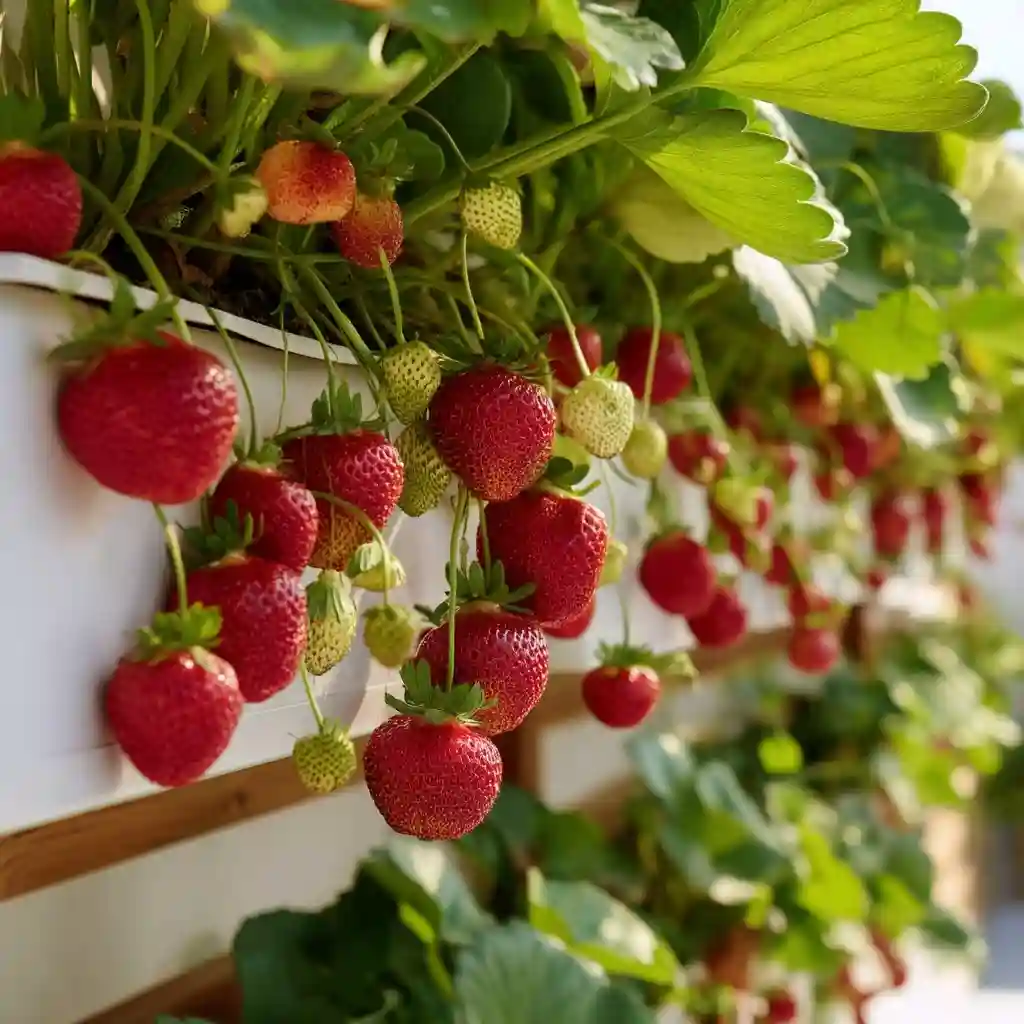
Sweet, juicy, and compact, strawberries are among the easiest fruits and vegetables to grow in pots. They thrive in containers at least 8 inches deep, making them perfect for small spaces, hanging baskets, or vertical planters. Keeping the fruit off the ground also helps reduce pest and disease issues.
Choose day-neutral or ever-bearing varieties like ‘Albion’ or ‘Seascape’ for continuous harvests throughout the growing season. Strawberries need full sun (6–8 hours daily) and well-draining soil. Keep them well-watered, especially during fruiting.
Tips:
- Add mulch or straw on top of the soil to keep fruit clean and dry.
- Trim runners if you want to focus energy on fruit production.
- Pair with spinach or lettuce as companion plants in larger containers.
19. Fig Trees
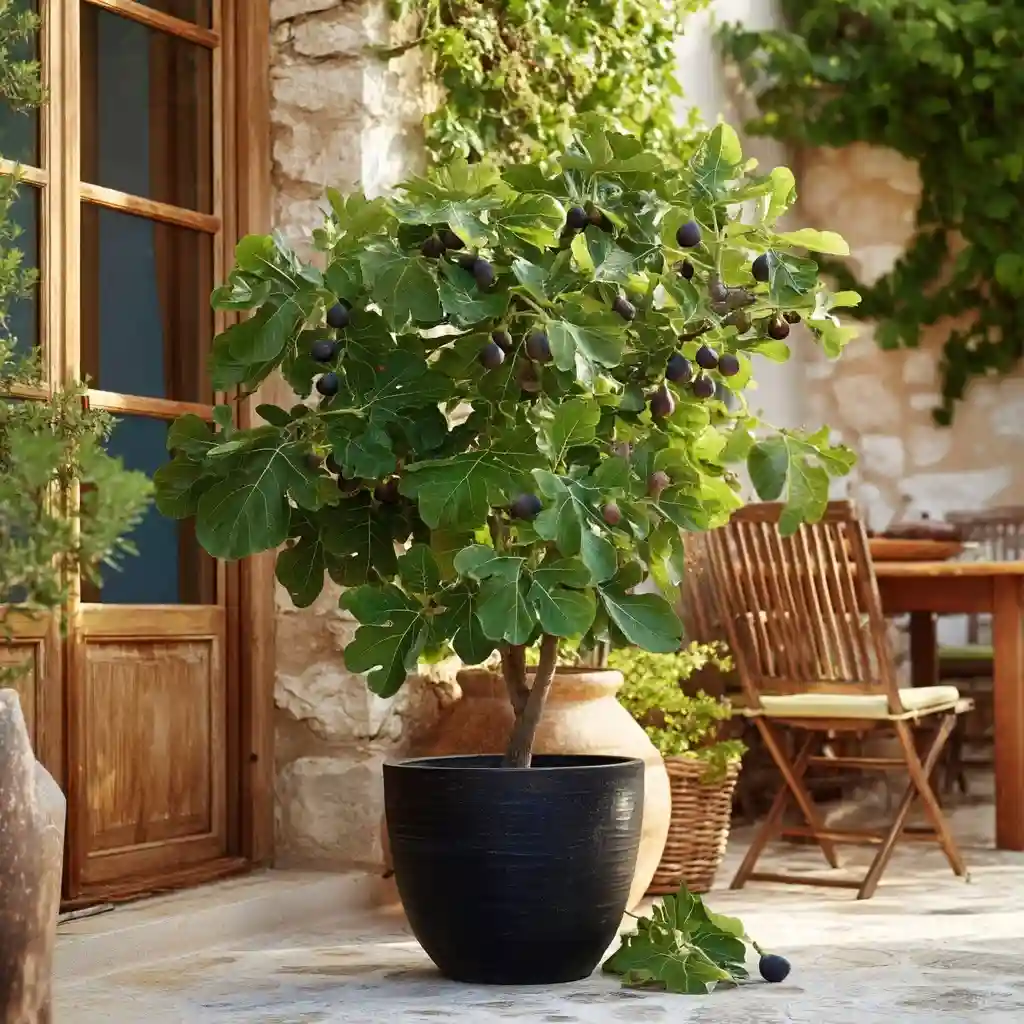
For a Mediterranean touch in your garden, fig trees are excellent fruiting vegetables to grow in pots—well, technically fruits, but perfect for container culture. They tolerate pruning and confinement, making them ideal for small spaces. Use a large container (20 gallons or more) to support healthy root development.
Figs love full sun and warm conditions. In cooler climates, container-grown figs can be moved indoors or to sheltered areas during winter. Choose compact varieties like ‘Petite Negra’ or ‘Little Miss Figgy’ for best results in pots.
Tips:
- Water deeply but infrequently, allowing the soil to dry between waterings.
- Use a high-quality, loamy potting mix and feed monthly during the growing season.
- Prune lightly in winter to maintain shape and control size.
20. Most Herbs
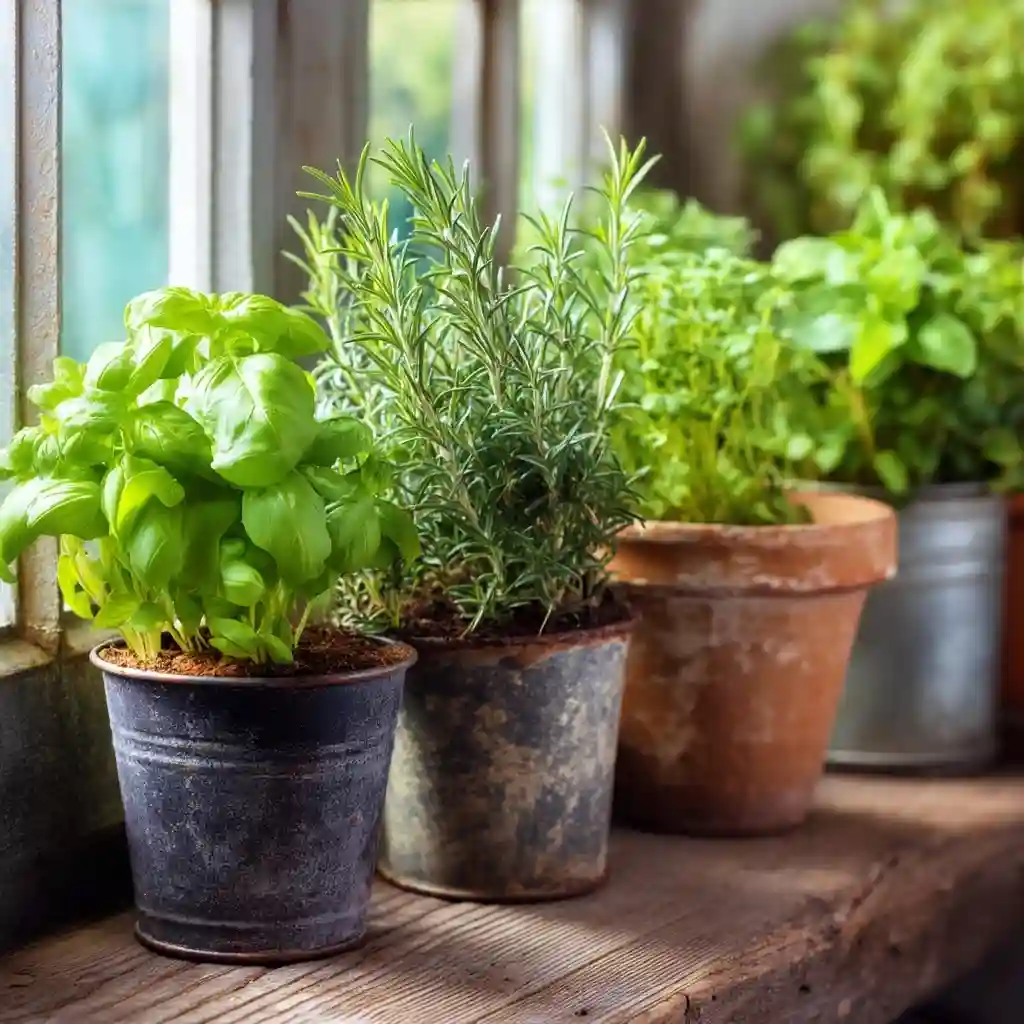
Fragrant, fast-growing, and incredibly useful, most herbs are perfect vegetables to grow in pots—especially those that tend to spread aggressively in the garden. Herbs like mint, oregano, thyme, basil, parsley, and chives thrive in containers and can be grown in small spaces such as windowsills, patios, or balconies.
Use containers of any size, though most herbs do well in 2-gallon pots or larger. Herbs prefer well-draining soil, and many, like rosemary and thyme, thrive in slightly dry conditions. Group herbs with similar water and sun needs in the same container for easier care.
Tips:
- Harvest regularly to encourage new growth.
- Place sun-loving herbs (like basil and rosemary) in full sun, and shade-tolerant ones (like parsley and mint) in partial sun.
- Keep invasive herbs like mint in their own pots to prevent takeover.
Conclusion
You don’t need a big backyard to grow fresh, flavorful food at home. With the right setup, the vegetables to grow in pots listed above can provide an abundant harvest from even the smallest spaces. Whether you’re gardening on a sunny balcony, patio, or windowsill, container gardening allows you to take control of your growing conditions, reduce pests, and enjoy fresh produce just steps from your kitchen.
Start small, choose the right containers, and grow what you love to eat. Over time, your confidence—and your container garden—will flourish.
🌿 Love gardening inspiration? Follow me on Pinterest for bold plant ideas, tips, and seasonal color!
More Posts
